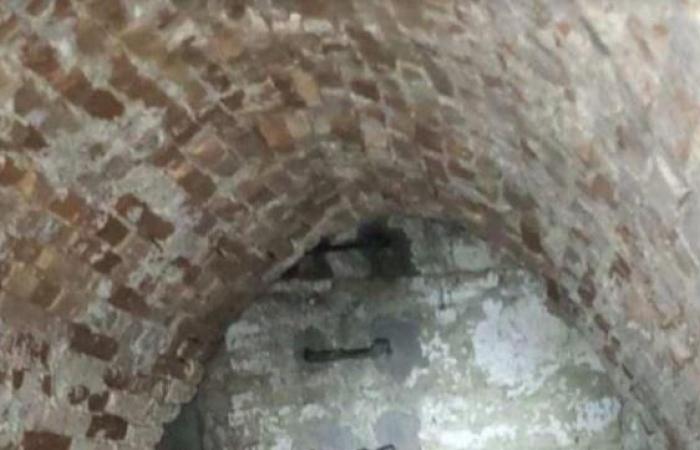The underground checks on Faenza carried out by Hera in the aftermath of the flood led the technicians to come across a bastion below Porta delle Chiavi, the existence of which had been lost. The top of the vault of the underground chamber emerged first, which was just 25 centimeters below the road surface, exactly in the center of the road, at the point where Corso Europa becomes Via Forlivese. Hera staff lowered themselves into the underground chamber after making a hole in the brick vault: they were presumably the first to enter it after many decades. “Here – write the Municipality and the multi-utility – the technicians found an underground environment with semi-circular and semi-oval vaults, with architectural characteristics of great historical interest. The heads of the lateral arms correspond in fact to the foundations of Porta delle Chiavi, which would suggest that construction was contemporary with the Manfredi walls, dating back to the first half of the 15th century”.
The nature of the site was revealed by the observation of some of its aspects: “The preliminary analysis revealed the presence of ancient loopholes, probably for firearms, and of flues for the expulsion of smoke, confirming how the environment had a defensive function. Access to the newly found chamber was via a door, now walled up, and a brick staircase, making it a sort of underground bastion to reinforce the defenses of Porta delle Chiavi. To ensure safe and easy access to the room, Hera technicians have installed a metal trap door on the exploratory hole made in the vault which will also allow access to scholars”. The post-flood forced the multi-utility staff to go several times into the network of underground Faenza canals, which is wider than one might think. Hera has ensured its commitment to avoid any interaction of the newly discovered environment with the sewerage system.
The novelty will be presented to the public on Monday 17 June, in a scientific conference scheduled for 6.45pm at the Commenda church, organized by Borgo Durbecco in the presence of the deputy mayor Andrea Fabbri, of Andrea Casadio for Hera, and of the historian Stefano Saviotti. “This discovery – explains Saviotti – reveals an environment still in good condition, humid but not flooded, and almost completely retains its medieval appearance. It is not excluded that under the rubble there may be finds from the Manfredi era or later”.
Filippo Donati



